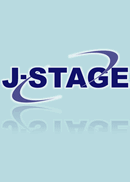All issues

Volume 34, Issue 1
Displaying 1-6 of 6 articles from this issue
- |<
- <
- 1
- >
- >|
-
[in Japanese]1980Volume 34Issue 1 Pages 3-12
Published: 1980
Released on J-STAGE: February 19, 2013
JOURNAL FREE ACCESSDownload PDF (7674K) -
Studies on Mother Liquid in Salt-Manufacturing Process (Part 34)Tsutomu MASUZAWA1980Volume 34Issue 1 Pages 13-19
Published: 1980
Released on J-STAGE: February 19, 2013
JOURNAL FREE ACCESSIn the previous paper, the amount and the crystal-form of impurities on and in crystals of Australiansolar salts imported during 1969-1971 were reported. In this paper, the author studied thesame on Australian solar salts imported during 1972-1976 (Port Hedland, Lake Macleod, Port Dampier and Shark Bay) for comparison with the previous paper. And the following results wereobtained.
1. The amount of impurities of Australian solar salts was 0.000-0.07% insoluble matter, 0.01-0.03%K+, 0.02-0.06%Mg2+, 0.03-0.05% Ca2+, 0.09-0.18%SO42-, 1.2-3.4%H2O. The potassium andmagnesium contents of Shark Bay and the sulfate and water contents of Lake Macleod were relativelyhigh. When the results were compared with the previous paper, no remarkable change wasobserved except the decrease of impurities of Port Hedland.
2. The amount of impurities in crystals of these salts was 0.001-0.04% insoluble matter, 0.004-0.03%K+, 0.005-0.03%Mg2+, 0.005-0.06%Ca2+, 0.03-0.07%SO42- and 0.2-1.0% H2O. Themagnesium content of Port Hedland was low, while the water content of Lake Macleod was relativelyhigh (0.8%). When the results were compared with previous paper, no remarkable changewas observed except Port Hedland. All the impurities of Port Hedland decreased appreciably, especially the water content by one-tenth of the previous paper.
3. It was shown that solar salts with high water content did not always crystallize from themother liquid of high magnesium-ion concentration. Therefore, when an appropriate procedure isapplied in crystallizing pond, high quality salts with small amount of water in crystals would bepossibly obtained even in the mother liquid of relatively high magnesium-ion concentration.
4. The particle sizes of 50% weight passing per cent of Australian solar salts were 2.2-3.5mm, which were smaller than those of Mexican solar salts (3.4-4.5mm).View full abstractDownload PDF (4575K) -
Ion-Exchange Concentration on Chelating Resin and Atomic Absorption Spectrophotometric Determination of Trace Amount Calcium in HighKo HIROI, Tomio SHINOHARA1980Volume 34Issue 1 Pages 20-24
Published: 1980
Released on J-STAGE: February 19, 2013
JOURNAL FREE ACCESSThe determination of trace amount calcium in high purity sodium chloride has been studied byseparating it with chelating resin and determining it atomic absorption spectrophotometrically.
After refining the chelating resin by batch method, it was used for treatment. The effect ofpH of sample solution and the effect of concentration of sodium chloride on the treatment withresin were comparatively little.
The procedure was as follows. The sample solution was allowed to pass through the columnpacked with 1 g of the Na+-form wet resin. Then the columnwas washed with distilled water andeluted with 2N-HNO3. The effluent was analyzed by atomic absorption spectrophotometer. Magnesium, potassium, iron, copper and zinc did not interfere, and a coefficient of variation ofthis method was 2.5%.
The application of the method proposed here for high purity salts has provided a convenient method for the determination of calcium.View full abstractDownload PDF (2994K) -
Studies on the Automatic Analysis of Salt Manufacturing Samples (Part 3)Takahiro KANOU, Shizuo SUGITA1980Volume 34Issue 1 Pages 25-30
Published: 1980
Released on J-STAGE: February 19, 2013
JOURNAL FREE ACCESSIn order to determine automatically sulfate ion of salt manufacturing samples, Technicon's autoanalyzer with the cation exchange resin (Bio-Rex 70) was investigated.
In this method, the sample solution was first passed through a cation exchange column, in orderthat cations such as alkaline earth group wereto be removed from the sample.Next, the sulfateion in effluent was reacted with alcoholic solution of MTB-Ba complex, and then it was eliminatedas a fine Barium sulfate crystal.
Finally, quantity of sulfate ion was fixed indirectly by absorbancy measurement of gray color at 460nm, in which intensity of this gray color is quantitatively proportioned to the sulfate ion presentedunder the alkaline condition.
In this method, the relation between the absorbancy of the solution and the sulfate ion concentrationwas curvilinear to 100mg/l.
This method has the same accuracy as the conventional Barium chromate method, and can analyze continuously 15-20 samples per hour.View full abstractDownload PDF (3568K) -
Yoshinobu TANAKA, Noriko KANAI1980Volume 34Issue 1 Pages 31-36
Published: 1980
Released on J-STAGE: February 19, 2013
JOURNAL FREE ACCESSUsing results of experiment on concentrating sea water by ion exchange membrane electrodialyzer, characteristics of membrane such as transport number, solute diffusion coefficient, electro-osmoticcoefficient and concentration difference osmotic coefficient were obtained. These membrane characteristicsincrease with the rising of temperature, and increasing ratio of the concentration differenceosmotic coefficient and the solute diffusion coefficient are larger than the increasing ratioof the transport number and the electro-osmotic coefficient. The effects of temperature and themembrane characteristics on the concentrating results were evaluated, and the following resultswere obtained.
(1) Ionic diffusion is extremely smaller than ionic migration.
(2) At low temperature electro-osmosis is larger than concentration difference osmosis, butthe concentration difference osmosis increases as temperature rises and surpasses the electroosmosis at high temperature.View full abstractDownload PDF (3246K) -
Some Reports about IDEA Congress in NiceHiroyuki SATONE1980Volume 34Issue 1 Pages 37-43
Published: 1980
Released on J-STAGE: February 19, 2013
JOURNAL FREE ACCESSDownload PDF (4124K)
- |<
- <
- 1
- >
- >|